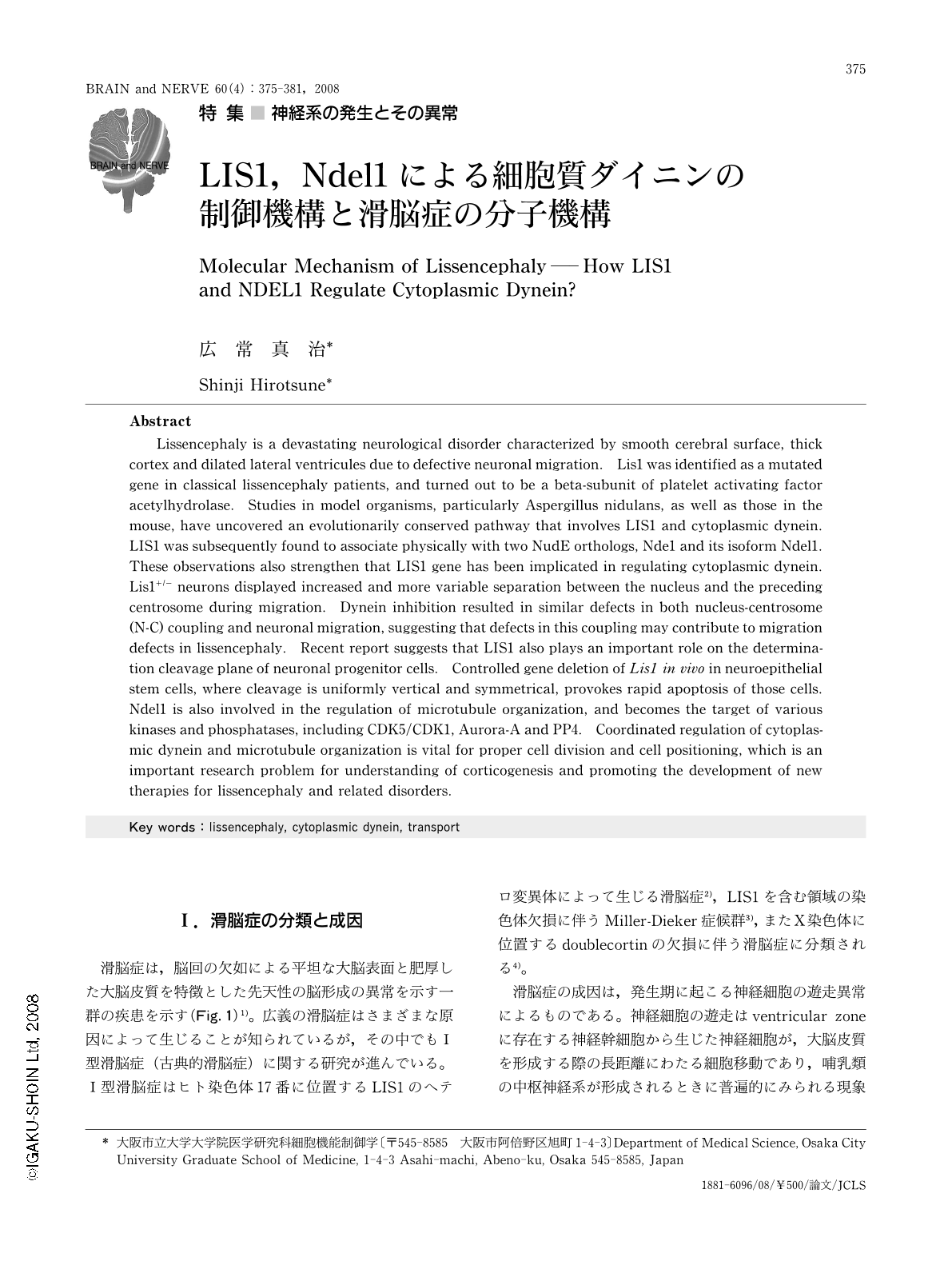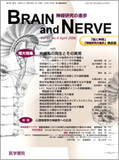Japanese
English
- 有料閲覧
- Abstract 文献概要
- 1ページ目 Look Inside
- 参考文献 Reference
Ⅰ.滑脳症の分類と成因
滑脳症は,脳回の欠如による平坦な大脳表面と肥厚した大脳皮質を特徴とした先天性の脳形成の異常を示す一群の疾患を示す(Fig.1)1)。広義の滑脳症はさまざまな原因によって生じることが知られているが,その中でもⅠ型滑脳症(古典的滑脳症)に関する研究が進んでいる。Ⅰ型滑脳症はヒト染色体17番に位置するLIS1のヘテロ変異体によって生じる滑脳症2),LIS1を含む領域の染色体欠損に伴うMiller-Dieker症候群3),またX染色体に位置するdoublecortinの欠損に伴う滑脳症に分類される4)。
滑脳症の成因は,発生期に起こる神経細胞の遊走異常によるものである。神経細胞の遊走はventricular zoneに存在する神経幹細胞から生じた神経細胞が,大脳皮質を形成する際の長距離にわたる細胞移動であり,哺乳類の中枢神経系が形成されるときに普遍的にみられる現象である。この神経細胞の遊走により哺乳類の特徴である6層からなる大脳皮質が形成されるが,何らかの原因で神経細胞の遊走が障害されれば,正常な神経細胞の構築ができず,滑脳症に至る。
Abstract
Lissencephaly is a devastating neurological disorder characterized by smooth cerebral surface, thick cortex and dilated lateral ventricules due to defective neuronal migration. Lis1 was identified as a mutated gene in classical lissencephaly patients, and turned out to be a beta-subunit of platelet activating factor acetylhydrolase. Studies in model organisms, particularly Aspergillus nidulans, as well as those in the mouse, have uncovered an evolutionarily conserved pathway that involves LIS1 and cytoplasmic dynein. LIS1 was subsequently found to associate physically with two NudE orthologs, Nde1 and its isoform Ndel1. These observations also strengthen that LIS1 gene has been implicated in regulating cytoplasmic dynein. Lis1+/- neurons displayed increased and more variable separation between the nucleus and the preceding centrosome during migration. Dynein inhibition resulted in similar defects in both nucleus-centrosome (N-C) coupling and neuronal migration, suggesting that defects in this coupling may contribute to migration defects in lissencephaly. Recent report suggests that LIS1 also plays an important role on the determination cleavage plane of neuronal progenitor cells. Controlled gene deletion of Lis1 in vivo in neuroepithelial stem cells, where cleavage is uniformly vertical and symmetrical, provokes rapid apoptosis of those cells. Ndel1 is also involved in the regulation of microtubule organization, and becomes the target of various kinases and phosphatases, including CDK5/CDK1, Aurora-A and PP4. Coordinated regulation of cytoplasmic dynein and microtubule organization is vital for proper cell division and cell positioning, which is an important research problem for understanding of corticogenesis and promoting the development of new therapies for lissencephaly and related disorders.

Copyright © 2008, Igaku-Shoin Ltd. All rights reserved.


